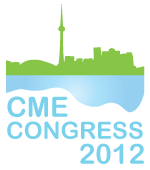Margaret Jin (Hamilton Family Health Team); Antony Gagnon (Hamilton Family Health Team); Mitch Levine (McMaster University); Lehana Thabane (McMaster University); Lisa Dolovich (McMaster University)
Background
Personalized academic detailing (PAD) is a new initiative in which pharmacists integrated within a family health team (FHT) provide academic detailing (AD) to prescribers.
Purpose
To describe/determine the feasibility of a smoking cessation (SC) PAD program.
Eight pharmacists (5.8 FTE) received basic AD training and upskilling on SC PAD. 48/54 (88.9%) physicians and 9/10 (90.0%) NPs consented.
The PAD coordinator time was 29.1 hours. The time for upskilling was 3.1 hours. The time for PAD session was 15 and 5 minutes for an initial and follow-up visit, respectively. The number of clinicians detailed within 3 and 6 months were 50/64 (78.1%) and 57.64 (89.1%), respectively. The number of new SC referrals at 3 and 6 months was 66 and 200 patients, respectively.
Methods
Design: Descriptive retrospective cohort pilot project
Setting: Primary Care
Participants: FHT pharmacists, physicians, nurse practitioners (NPs) and their patients.
Intervention: Pharmacists receive basic AD training, education (upskilling) on SC, and provide education to clinicians.
Measurement/Outcomes: Data were collected from pharmacists using structured forms.
Five criteria were generated to measure feasibility including average time for an initial PAD session of <60 minutes and percentage of clinicians detailed within 3 months of >50%.
Data analysis: Descriptive statistics (mean, standard deviation, proportion) were generated.
Results
Eight pharmacists (5.8 FTE) received basic AD training and upskilling on SC PAD. 48/54 (88.9%) physicians and 9/10 (90.0%) NPs consented.
The PAD coordinator time was 29.1 hours. The time for upskilling was 3.1 hours. The time for PAD session was 15 and 5 minutes for an initial and follow-up visit, respectively. The number of clinicians detailed within 3 and 6 months were 50/64 (78.1%) and 57.64 (89.1%), respectively. The number of new SC referrals at 3 and 6 months was 66 and 200 patients, respectively.
Conclusion
This pilot study met feasibility criteria with respect to the management, resources, process and scientific components.





